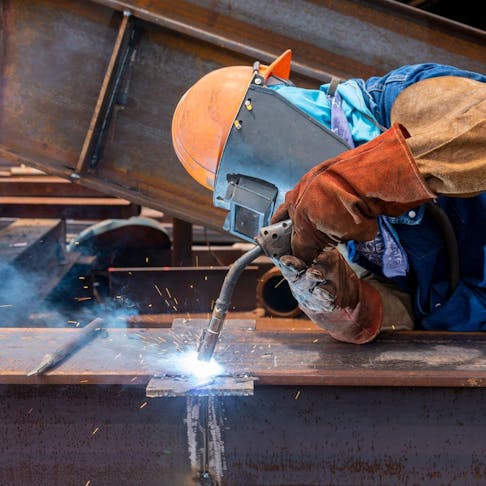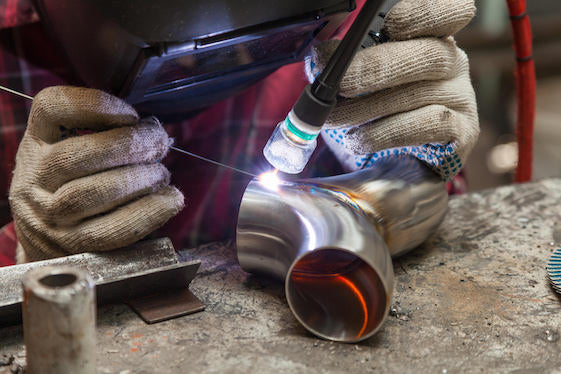All Regarding Welding: Secret Insights Into Techniques and Finest Practices for Success
Welding encompasses a selection of techniques, each matched for details products and applications. Comprehending these approaches, such as GMAW, SMAW, and TIG, is vital for achieving suitable outcomes. Additionally, the ideal tools and safety and security techniques can not be forgotten. As preparation and repairing play crucial roles in the welding process, grasping these aspects can substantially boost the high quality of the last item. What are the vital variables that ensure an effective weld?
Comprehending Various Welding Methods
Welding methods include a variety of approaches, each matched to particular applications and materials. Among the most usual strategies are Gas Steel Arc Welding (GMAW), Protected Metal Arc Welding (SMAW), and Tungsten Inert Gas Welding (TIG) GMAW, additionally recognized as MIG welding, is preferred for its rate and flexibility, making it suitable for thin products. SMAW, or stick welding, is favored for its simpleness and efficiency in exterior environments, particularly with thicker steels. TIG welding uses precision and control, making it suitable for detailed work and non-ferrous steels (Belgrade Welding). Each method has its unique advantages and factors to consider, permitting welders to choose the very best approach based upon the task's requirements, product kind, and preferred end results. Comprehending these methods is essential for successful welding
Crucial Welding Devices and Devices
While various welding techniques call for details skills, the ideal tools and devices are similarly crucial for attaining high quality results. Crucial welding tools consists of welding machines, which differ depending on the technique-- such as MIG, TIG, or stick welding. Safety gear, including aprons, helmets, and handwear covers, guarantees security and comfort throughout the procedure. On top of that, clamps and components aid safeguard products in location, making certain accuracy in welds. Consumables like welding rods, cable, and securing gas are additionally vital elements that influence the quality of the weld. Devices such as grinders and cutters help with surface area prep work and post-weld completing, adding to an expert end result. Spending in high-quality equipment ultimately boosts the effectiveness and efficiency of welding tasks.
Security Practices in Welding
Correct safety and security techniques are essential in the welding sector to shield workers from potential threats. Welders have to use suitable individual safety equipment (PPE), consisting of safety helmets with proper shading, handwear covers, and flame-resistant clothes. Adequate air flow is important to minimize exposure to dangerous fumes and gases generated during the welding procedure. In addition, workers should be learnt the correct handling of welding tools to avoid accidents. Fire safety and security steps, such as maintaining combustible materials away from the welding location and having fire extinguishers readily available, are essential. Regular examinations of devices and offices can assist determine potential risks prior to they result in crashes. By adhering to these safety practices, welders can produce a more secure working setting and reduce dangers related to their profession.
Preparing Materials for Welding
Preparing products for welding is a crucial step that greatly affects the quality and integrity of the end product (Montana Mobile Welding and Repair). Correct prep work involves cleaning the surfaces to get rid of impurities such as oil, dust, and rust, which can endanger the weld. Strategies such as grinding, fining sand, or using solvents are generally employed to attain a clean surface. In addition, making certain that the products mesh snugly is necessary; voids can cause weak welds. It's likewise crucial to take into consideration the alignment and positioning of the parts, as this will certainly influence the convenience of welding and the last outcome. Ultimately, choosing the suitable filler product and making sure compatibility with the base steels is essential for achieving strong, durable welds
Tips for Achieving High-Quality Welds
Achieving top quality welds calls for interest to information and adherence to best practices throughout the welding procedure. Correct joint preparation is vital, guaranteeing surface areas are totally free and tidy from pollutants. Selecting the appropriate filler product and welding strategy based upon the base metals is vital for ideal bonding. Preserving constant traveling speed and angle while welding can promote and stop problems uniformity. Additionally, regulating warm input is important; too much heat can bring about warping and weakened joints. If needed, regularly inspecting the welds during the process permits for immediate modifications. Ultimately, check this site out employing appropriate post-weld treatments, such as cleansing and anxiety relief, can boost the longevity and stability of the weld, eventually ensuring an effective outcome.
Troubleshooting Common Welding Issues
Welding frequently presents obstacles that can influence the high quality and stability of the end product. Common concerns such as porosity, irregular weld beads, and getting too hot can emerge, each needing particular troubleshooting methods. Recognizing these issues is necessary for welders to improve their abilities and attain excellent results.
Porosity Troubles Described
Although porosity can typically be overlooked, it stays an essential issue in welding that can jeopardize the honesty of a completed item. Porosity refers to the existence of small gas pockets within the weld grain, which can lead and weaken the joint to early failure. This trouble normally arises from impurities, moisture, or inappropriate securing gas coverage throughout the welding process. To alleviate porosity, welders must confirm that the base products are dry and tidy, use ideal securing gases, and preserve consistent welding parameters. On a regular basis evaluating the tools and atmosphere can additionally help determine prospective problems prior to they manifest in the weld. Attending to porosity effectively is vital for attaining strong, durable welds that meet high quality requirements.

Inconsistent Weld Beans
Inconsistent weld grains can substantially influence the top quality and toughness of a completed item. Different elements contribute to this problem, consisting of inappropriate travel rate, incorrect amperage settings, and inconsistent electrode angles. When the welder moves also promptly, a bead might show up narrow and lack infiltration, while relocating as well slowly can create extreme build-up. In addition, utilizing the incorrect amperage can cause either undercutting or extreme spatter, both of which concession weld stability. The welder's technique, such as inconsistent lantern movement, can likewise bring about irregular grain look. To mitigate these problems, welders ought to concentrate on keeping constant, controlled motions and making certain proper tools setups to attain harmony in their welds. Uniformity is vital go to this web-site to attaining solid and trustworthy welds.
Getting Too Hot and Warping Issues
Too much warm throughout the welding process can bring about considerable getting too hot and warping problems, affecting the structural integrity of the work surface. These problems typically materialize as distortion, which can endanger alignment and fit-up, making further assembly testing. Aspects contributing to overheating include the option of welding specifications, such as voltage and travel rate, along with the sort of material being bonded. To minimize these problems, welders need to preserve consistent travel speed and appropriate warm input while keeping track of the workpiece temperature level. Additionally, pre-heating or post-weld warmth therapy can help alleviate anxieties triggered by fast cooling - Montana Mobile Welding and Repair Belgrade. Regular evaluation and adherence to ideal practices are crucial in avoiding getting too hot and making sure the durability and reliability of welded frameworks
Often Asked Questions
What Are the Career Opportunities in the Welding Industry?
The welding market uses diverse career chances, including placements as welders, engineers, educators, and inspectors. Specialists can operate in production, building, aerospace, and automobile industries, useful content gaining from strong need and affordable wages in different functions.
How Can I Boost My Welding Speed Without Giving Up Quality?
To improve welding speed without sacrificing high quality, one need to practice effective methods, preserve devices, maximize settings, and boost hand-eye sychronisation. Routine training and seeking comments can additionally significantly contribute to accomplishing much faster, premium welds.
What Certifications Are Offered for Welders?
Various certifications exist for welders, including those from the American Welding Society (AWS), the National Center for Building And Construction Education And Learning and Study (NCCER), and various industry-specific organizations. These credentials boost employability and show ability efficiency.
Exactly How Does Welding Impact the Properties of Metals?
Welding influences the residential properties of steels by changing their microstructure, which can bring about adjustments in hardness, strength, and ductility. Warmth input and cooling rates throughout the procedure substantially affect these material attributes.
Can I Bonded Dissimilar Metals Together?

Comments on “Steps to success for poor fusion from Montana Mobile Welding and Repair”